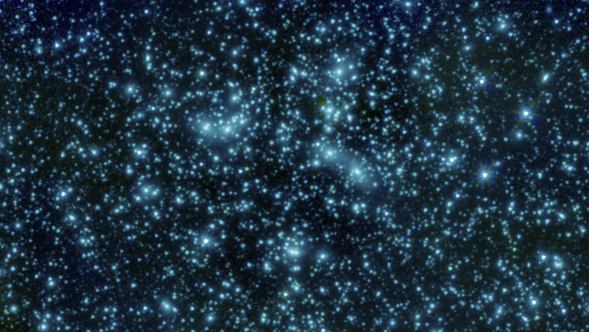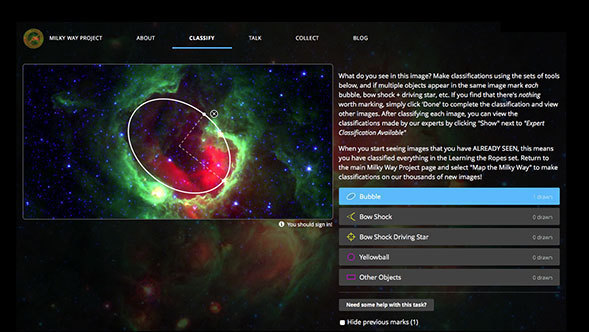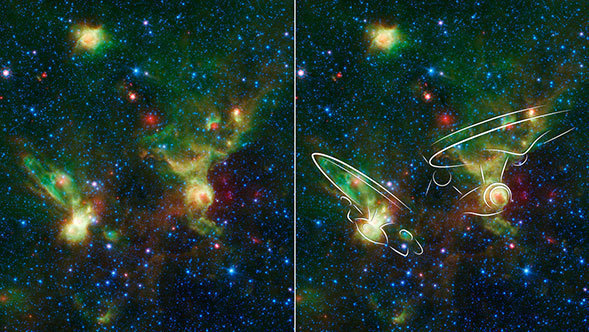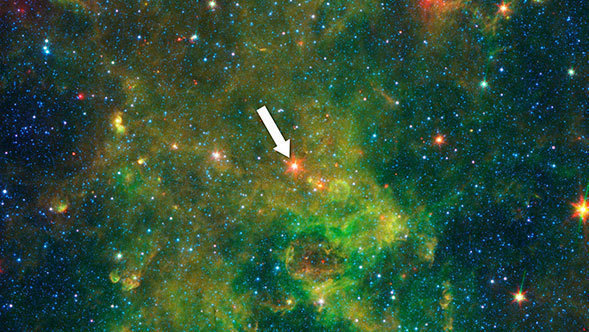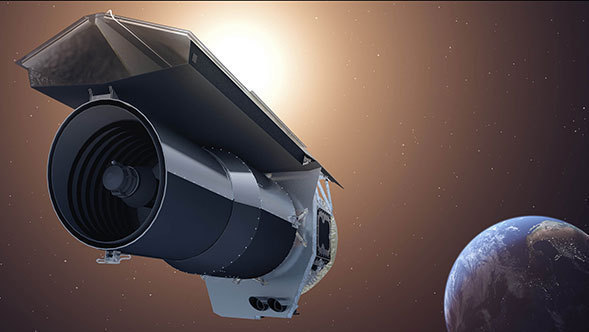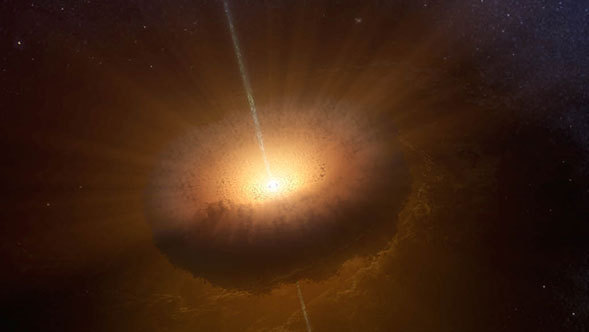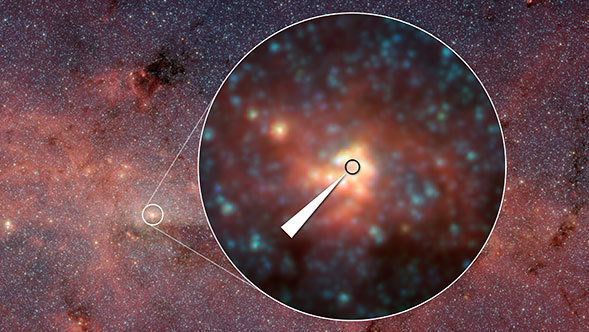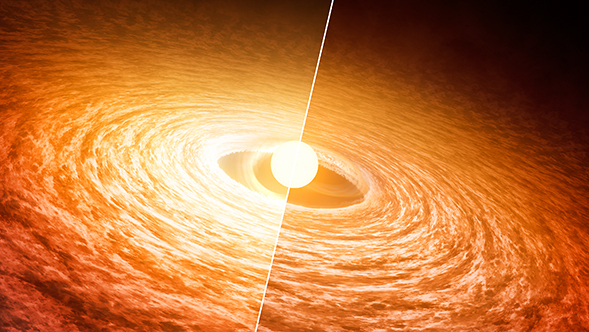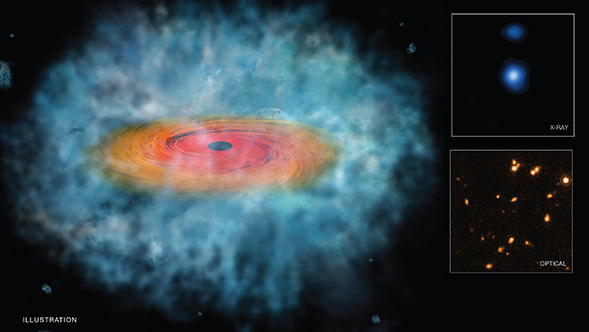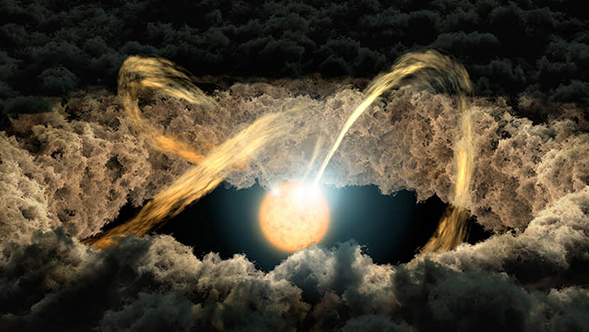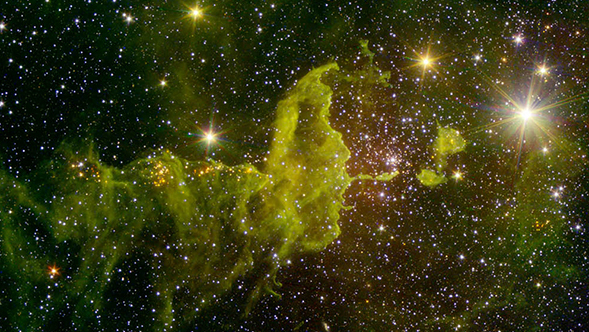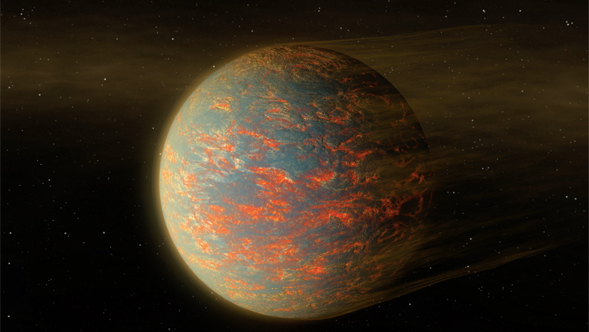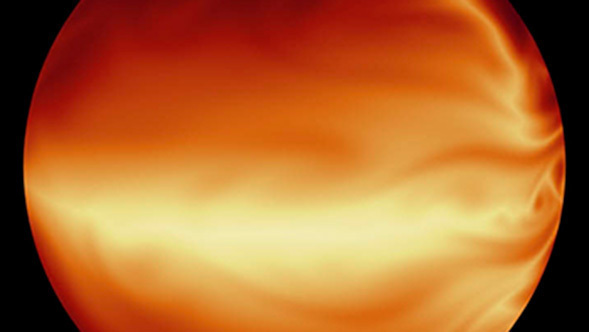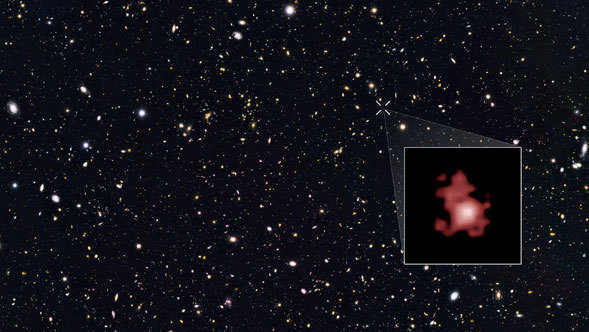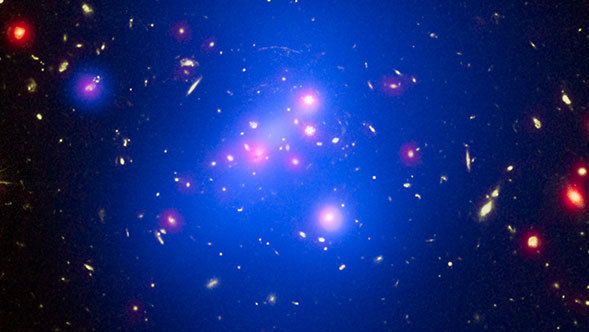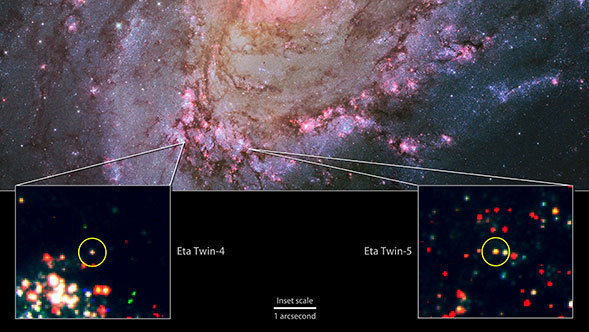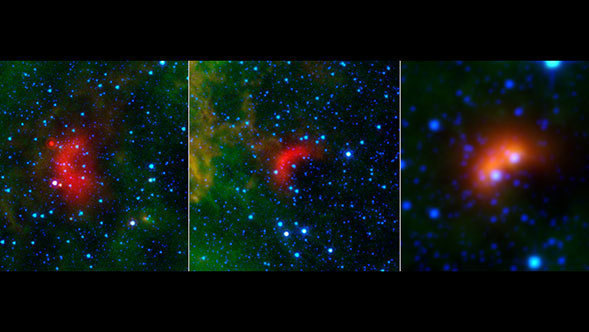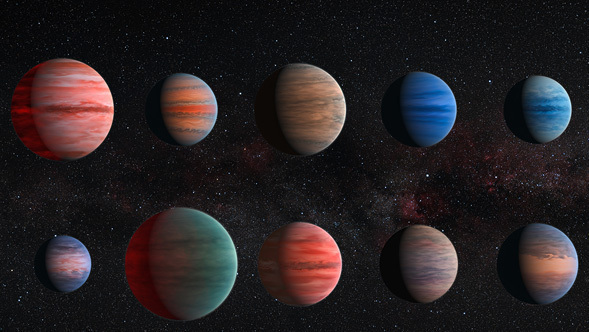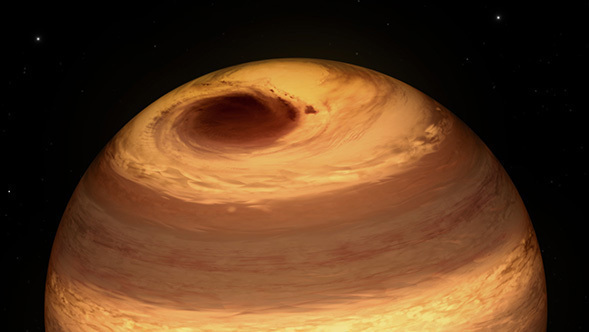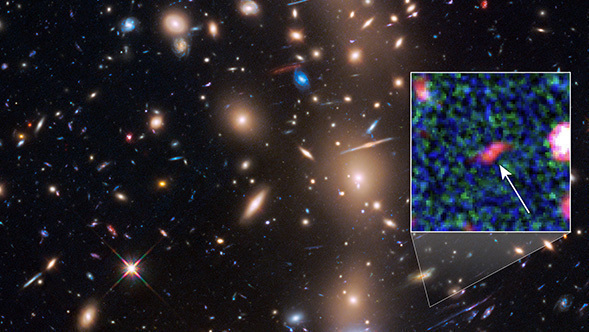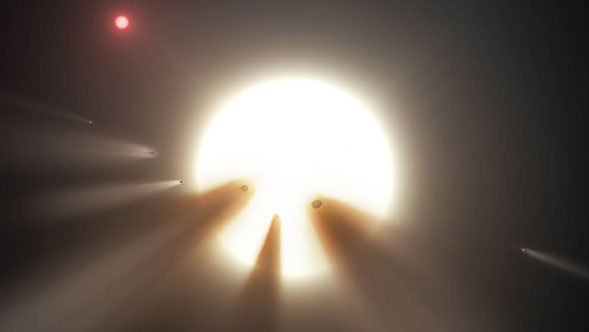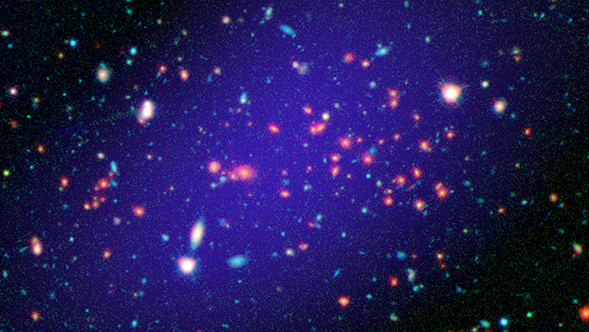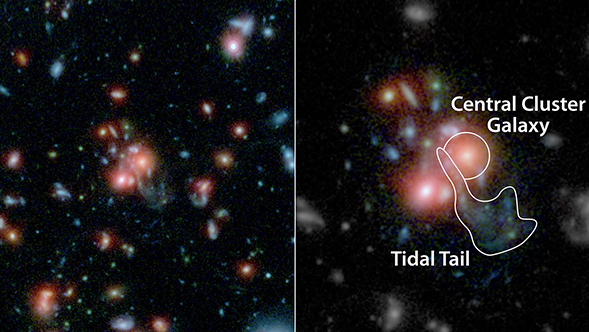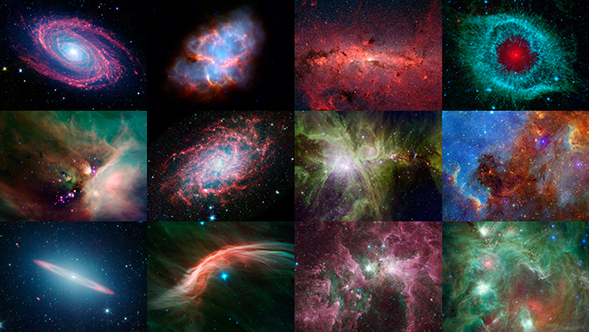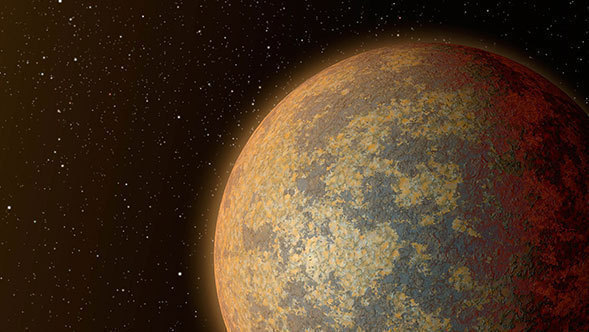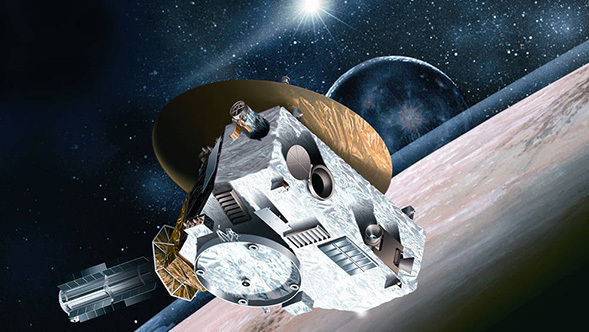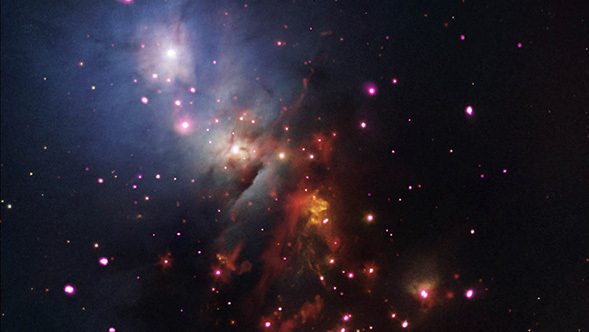Displaying news 91 - 120 of 516 in total
In the ongoing hunt for the universe's earliest galaxies, NASA's Spitzer Space Telescope has wrapped up its observations for the Frontier Fields project. This ambitious project has combined the power of all three of NASA's Great Observatories -- Spitzer, the Hubble Space Telescope and the Chandra X-ray Observatory -- to delve as far back in time and space as current technology can allow.
To most of us, our home galaxy, the Milky Way, seems like mind-boggling, never-ending space. But what does the Milky Way actually look like? How quickly is the Milky Way giving birth to new stars? In their efforts to answer these complex questions, scientists are figuring out new ways to break down the vast amounts of data they collect.
Just in time for the 50th anniversary of the TV series "Star Trek," which first aired September 8th,1966, a new infrared image from NASA's Spitzer Space Telescope may remind fans of the historic show.
For years, astronomers have puzzled over a massive star lodged deep in the Milky Way that shows conflicting signs of being extremely old and extremely young.
Celebrating the spacecraft's ability to push the boundaries of space science and technology, NASA's Spitzer Space Telescope team has dubbed the next phase of its journey "Beyond."
Alone on the cosmic road, far from any known celestial object, a young, independent star is going through a tremendous growth spurt.
The Spitzer Space Telescope is exploring Sagittarius A*, the black hole in the center of the Milky Way. This supermassive black hole packs about four million sun-masses into a volume roughly the size of our solar system.
Astronomers have gained a new perspective on the behavior of outbursting star FU Orionis, using data from an airborne observatory and a space telescope.
NASA has approved the continued operation of the Spitzer mission through the commissioning phase of the James Webb Space Telescope in early 2019 as part of the 2016 Astrophysics Senior Review process.
Using data from NASA's Great Observatories, astronomers have found the best evidence yet for cosmic seeds in the early universe that should grow into supermassive black holes.
Imagine you want to measure the size of a room, but it's completely dark. If you shout, you can tell if the space you're in is relatively big or small, depending on how long it takes to hear the echo after it bounces off the wall.
A nebula known as "the Spider" glows fluorescent green in an infrared image from NASA's Spitzer Space Telescope and the Two Micron All Sky Survey (2MASS). The Spider, officially named IC 417, lies near a much smaller object called NGC 1931, not pictured in the image. Together, the two are called "The Spider and the Fly" nebulae. Nebulae are clouds of interstellar gas and dust where stars can form.
Observations from NASA's Spitzer Space Telescope have led to the first temperature map of a super-Earth planet -- a rocky planet nearly two times as big as ours. The map reveals extreme temperature swings from one side of the planet to the other, and hints that a possible reason for this is the presence of lava flows.
How do some gas giant planets end up so feverishly close to their stars? NASA's Spitzer Space Telescope finds new clues.
By pushing NASA's Hubble Space Telescope to its limits, an international team of astronomers has shattered the cosmic distance record by measuring the farthest galaxy ever seen in the universe. This surprisingly bright, infant galaxy, named GN-z11, is seen as it was 13.4 billion years in the past, just 400 million years after the big bang. GN-z11 is located in the direction of the constellation of Ursa Major
Data from three of NASA's Great Observatories uncover the most massive galaxy cluster ever detected in the early universe.
A new study has found five objects with similar properties to the most luminous and massive stellar system within 10,000 light-years of Earth.
Astronomers are finding dozens of the fastest stars in our galaxy with the help of images from NASA's Spitzer Space Telescope and Wide-field Infrared Survey Explorer, or WISE.
Engineers and scientists have been busy recovering the Spitzer Space Telescope from standby mode since it experienced an anomaly on Nov. 26, 2015. On Dec. 14, they successfully turned on the telescope's primary instrument, the infrared array camera, or IRAC.
A survey of 10 hot, Jupiter-sized exoplanets conducted with NASA’s Hubble and Spitzer space telescopes has led a team to solve a long-standing mystery -- why some of these worlds seem to have less water than expected.
Astronomers have discovered what appears to be a tiny star with a giant, cloudy storm, using data from NASA's Spitzer and Kepler space telescopes. The dark storm is akin to Jupiter's Great Red Spot: a persistent, raging storm larger than Earth.
On Nov. 26, NASA's Spitzer Space Telescope entered into a standby mode while executing regular calibration observations. This mode is triggered by the spacecraft's fault protection system when an anomaly occurs. It puts Spitzer in a standby configuration until further instructions from the ground are received.
Astronomers harnessing the combined power of NASA’s Hubble and Spitzer space telescopes have found the faintest object ever seen in the early universe. It existed about 400 million years after the big bang, 13.8 billion years ago.
A star called KIC 8462852 has been in the news recently for unexplained and bizarre behavior. New clues emerge in the mystery of a star with odd light patterns.
Astronomers have discovered a giant gathering of galaxies in a very remote part of the universe, thanks to NASA's Spitzer Space Telescope and Wide-field Infrared Survey Explorer (WISE). The galaxy cluster, located 8.5 billion light-years away, is the most massive structure yet found at such great distances.
Astronomers have discovered a rare beast of a galaxy cluster whose heart is bursting with new stars. The unexpected find, made with the help of NASA's Spitzer and Hubble space telescopes, suggests that behemoth galaxies at the cores of these massive clusters can grow significantly by feeding off gas stolen from another galaxy
Relive the highlights of NASA's Spitzer Space Telescope mission with a new digital calendar.
Using NASA's Spitzer Space Telescope, astronomers have confirmed the discovery of the nearest rocky planet outside our solar system, larger than Earth and a potential gold mine of science data.
NASA's New Horizons will have the support of other spacecraft during its historic Pluto flyby, with observations from their outposts across the solar system.
A new image containing data from NASA's Spitzer and Chandra space telescopes shows a cluster of young stars expected to burn for billions of years.
Displaying news 91 - 120 of 516 in total
